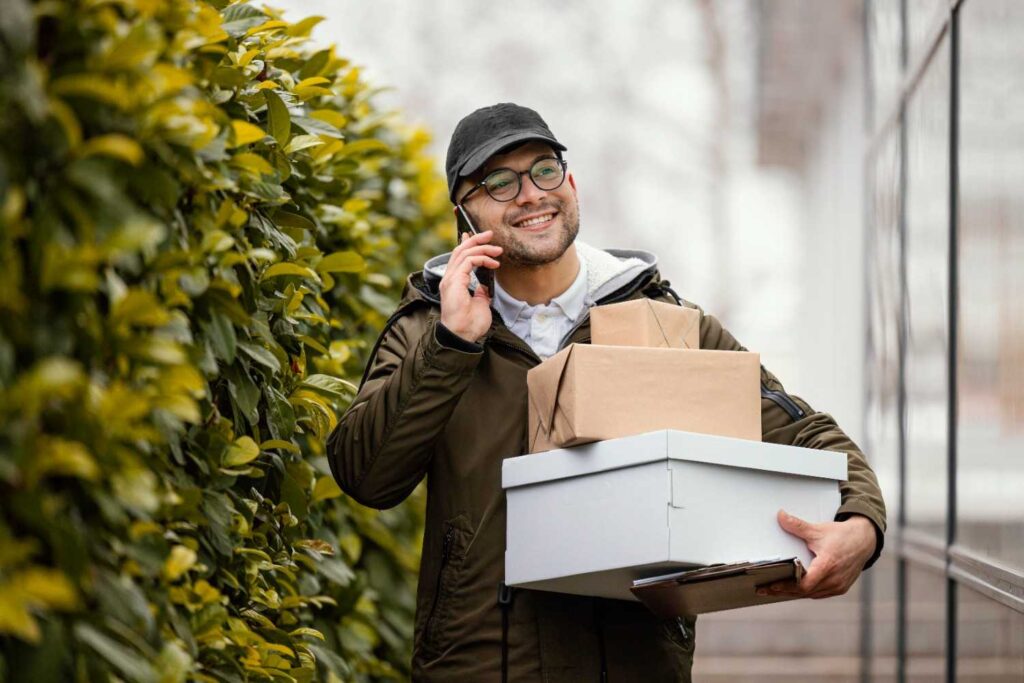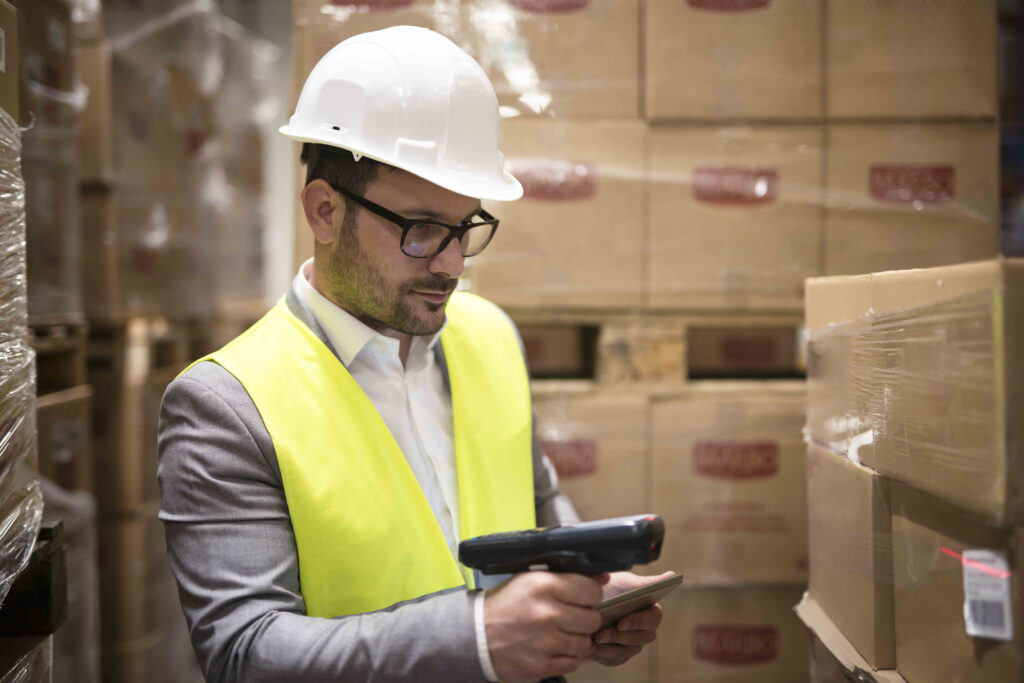What is Last Mile Carrier Tracking & Why It’s Important
What is Last Mile Carrier Tracking & Why It’s Important
Overview
Last mile carrier tracking has become a vital component of modern logistics, ensuring customers receive real-time updates and businesses maintain operational efficiency. This blog explores what last mile carrier tracking is, why it's important, and how it helps reduce delivery failures and improve customer satisfaction. We also discuss the key challenges in last mile tracking and how advanced technologies like GPS tracking, IoT, and AI-driven analytics are transforming the industry. Finally, we highlight how Shipox is redefining last mile tracking, offering businesses a seamless and efficient way to enhance their delivery operations.
Table of Contents:
- What is Lat Mile Tracking and why it's Important
- The Growing Importance of Last Mile Delivery Tracking
- Understanding the Last Mile Tracking Number
- How Last Mile Tracking Works
- Challenges in Last Mile Carrier Tracking
- Solutions to Improve Last Mile Tracking
- Benefits of Last Mile Carrier Tracking
- How Shipox Enhances Last Mile Tracking
- Conclusion
1. What is Last Mile Carrier Tracking & Why It’s Important
In today’s fast-paced e-commerce world, last mile carrier tracking plays a crucial role in ensuring a smooth and transparent delivery experience. It allows customers to monitor their shipments in real-time, offering updates on estimated delivery times, driver locations, and potential delays. For businesses, last-mile tracking provides operational insights, reduces delivery failures, and enhances supply chain visibility.
2. The Growing Importance of Last Mile Delivery Tracking
- Increasing Customer Expectations
Today’s consumers demand real-time visibility into their deliveries. With same-day and next-day shipping becoming the norm, last-mile tracking has transformed from a luxury into a necessity. Customers expect live tracking links, precise ETAs, and automated notifications that keep them informed about their orders every step of the way.
- Enhancing Delivery Efficiency
For logistics companies, last-mile carrier tracking is a game-changer in optimizing delivery routes, reducing failed deliveries, and improving fleet efficiency. With real-time tracking and dynamic route adjustments, businesses can anticipate potential delays, reroute drivers accordingly, and ensure that every package reaches its destination on time.
- Minimizing Delivery-Related Support Calls
A significant portion of customer service inquiries consists of "Where is my order?" (WISMO) calls. Without an efficient last-mile tracking system, businesses spend excessive time and resources handling these concerns. By implementing real-time tracking and automated status updates, companies can reduce WISMO calls, lower operational costs, and enhance customer satisfaction—all while freeing up their support teams to handle more pressing matters.
3. Understanding the Last Mile Tracking Number
A last mile tracking number is a unique identifier assigned to each package, allowing customers to monitor their shipment's progress through the final leg of delivery. This system ensures complete visibility and transparency, reducing uncertainty and enhancing customer experience.
How It Works:
- Tracking Number Issued – Once the order is processed, the retailer or shipping provider generates a last mile tracking number and shares it with the customer.
- Tracking Portal Access – Customers enter this tracking number on the carrier’s website or mobile app to view real-time updates.
- Live Status Updates – The system displays key shipment milestones, such as "At the warehouse," "Out for delivery," or "Delivered", ensuring customers are always informed.
By integrating last mile tracking into their logistics operations, businesses can enhance transparency, minimize failed deliveries, and improve overall customer satisfaction.
4. How Last Mile Tracking Works
Tracking Number & Online Portals
Customers receive a unique tracking number that enables them to monitor their shipment’s journey. By entering this number into a carrier’s online portal, they can access real-time updates on package location and estimated delivery times.
Integration with GPS & IoT
Advanced GPS tracking and IoT-enabled sensors provide real-time movement updates. Businesses can monitor temperature-sensitive goods, ensure route adherence, and automate proof-of-delivery verification.
Automated Customer Notifications
From "Out for Delivery" to "Delivered," automated SMS, email, and app notifications keep customers informed. Features like "Leave at the Door" and "Reschedule Delivery" improve customer convenience. Book a Demo now.
5. Challenges in Last Mile Carrier Tracking
Despite its advantages, last mile delivery tracking comes with challenges that businesses need to address:
While last mile tracking enhances visibility and efficiency, it comes with its own set of challenges that businesses must address to ensure seamless operations.
- Lack of Precision in ETAs
Factors like traffic congestion, sudden weather changes, and route diversions can lead to inaccurate estimated delivery times. When customers receive misleading ETAs, it results in frustration and decreased trust in the delivery service.
- Communication Breakdowns
Without real-time communication between drivers and dispatchers, tracking discrepancies can occur. A lack of instant status updates makes it difficult to provide accurate delivery information, leading to failed deliveries and increased customer complaints.
- High Implementation Costs
Setting up a robust tracking system requires an investment in GPS technology, cloud-based software, and automated customer notifications. While these tools significantly improve efficiency and reduce failed deliveries, the initial costs can be a challenge for smaller businesses.
Addressing these challenges with smart logistics solutions ensures that last mile carrier tracking becomes a competitive advantage rather than a bottleneck.
6. Solutions to Improve Last Mile Tracking
- GPS-Based Tracking Systems
By leveraging real-time GPS tracking, businesses can monitor driver locations, optimize delivery routes, and provide customers with highly accurate ETAs. This not only improves efficiency but also enhances transparency in last-mile logistics. - Mobile Apps for Delivery Personnel
Providing drivers with dedicated mobile apps enables seamless communication with dispatchers, real-time route updates, and proof-of-delivery verification through digital signatures or photos. This reduces miscommunication and improves overall operational efficiency. - Cloud-Based Delivery Management Platforms
A cloud-based last-mile tracking system, like Shipox, allows businesses to centralize delivery data, access real-time updates, and ensure precise order fulfillment. It enhances coordination between teams and provides better visibility across the supply chain. - Smart Lockers for Secure Deliveries
For customers who are unavailable during delivery hours, smart lockers offer a secure and convenient alternative for 24/7 package pickup. This reduces failed delivery attempts and improves customer satisfaction by providing flexible delivery options. - Blockchain for Transparency & Security
By leveraging blockchain technology, businesses can maintain tamper-proof records of deliveries, ensuring greater transparency and security in last-mile logistics. This helps prevent fraud, improves accountability, and builds customer trust through verifiable transaction histories.
7. Benefits of Last Mile Carrier Tracking
- Improved Customer Experience
Providing real-time updates keeps customers informed about their delivery status, eliminating uncertainty and reducing delivery anxiety. With better transparency and accurate ETAs, businesses can enhance customer satisfaction and build long-term trust. - Increased First-Attempt Deliveries
With automated tracking notifications, customers receive timely alerts about their deliveries, ensuring they are available at the scheduled time. This significantly reduces failed delivery attempts, minimizes rescheduling, and improves overall efficiency in last-mile logistics. - Enhanced Resource Optimization
Fleet managers can leverage real-time tracking to monitor vehicle performance, optimize fuel consumption, and ensure efficient delivery assignment. By reducing idle time and improving route planning, businesses can cut operational costs and maximize resource utilization. - Competitive Edge for Businesses
Companies that offer reliable last-mile tracking stand out from competitors by delivering a seamless and transparent experience. Enhanced visibility fosters customer trust, encourages repeat business, and strengthens brand loyalty, ultimately leading to long-term growth.
8. How Shipox Enhances Last Mile Tracking
Shipox offers a robust last mile delivery tracking solution that streamlines logistics operations for businesses. With AI-driven route optimization, real-time tracking, automated customer notifications, and digital proof of delivery, Shipox ensures seamless last-mile operations.
Key Features of Shipox Last Mile Tracking:
- Real-time GPS tracking & automated ETAs
- Route optimization for cost-effective deliveries
- Seamless integration with existing logistics software
- AI-powered analytics for data-driven decision-making
- Digital proof of delivery & customer feedback integration
With Shipox’s last mile logistics solutions, businesses can minimize delivery failures, optimize resources, and improve customer satisfaction.
9. Conclusion
Last-mile carrier tracking has revolutionized modern logistics by offering real-time visibility, optimizing delivery routes, and ensuring a seamless customer experience. With increasing customer expectations and growing competition, businesses must embrace advanced tracking solutions to stay ahead. Investing in smart last-mile tracking not only reduces operational inefficiencies but also enhances trust and satisfaction among customers.
With Shipox, companies can automate last-mile operations, minimize delays, and provide accurate delivery updates, leading to a more reliable and efficient logistics process. Ready to transform your last-mile deliveries? Book a demo with Shipox today and experience the future of seamless logistics!
Recent Blogs
[Sassy_Social_Share type=”floating” align=”right” top=”250″]



